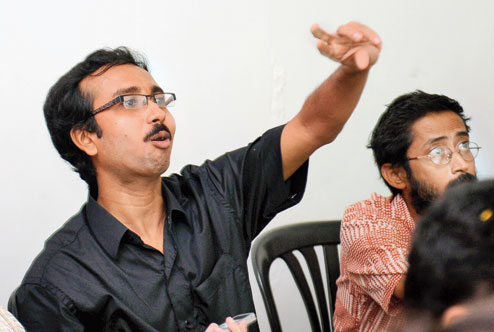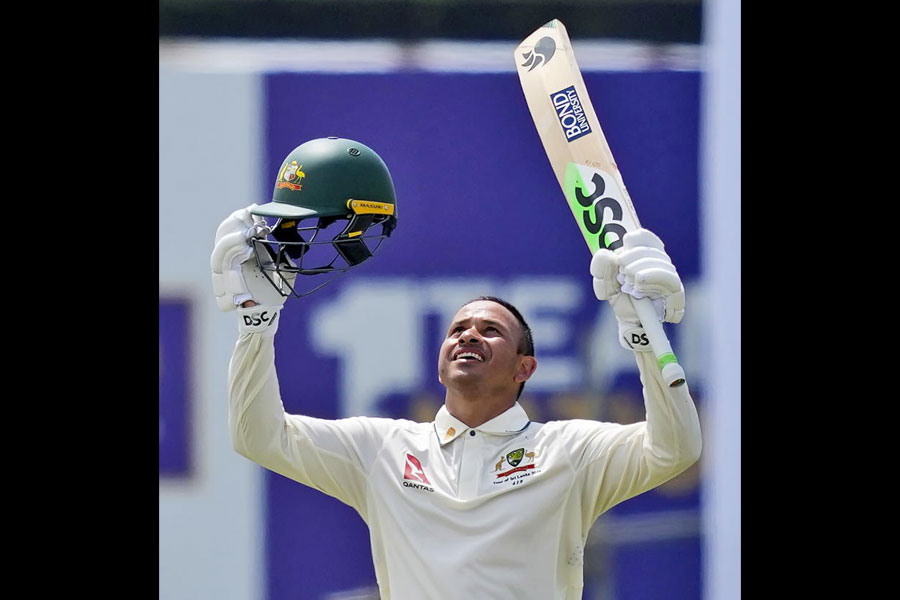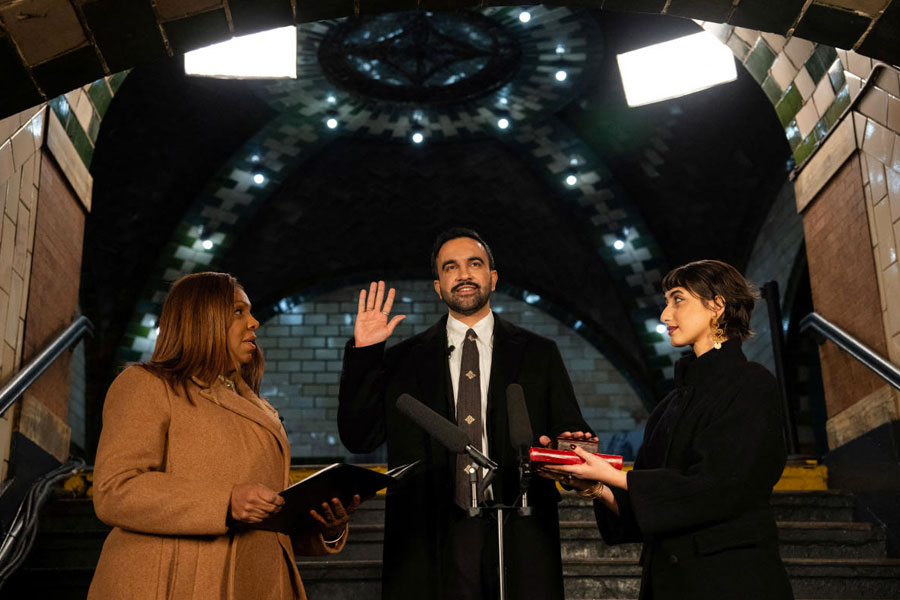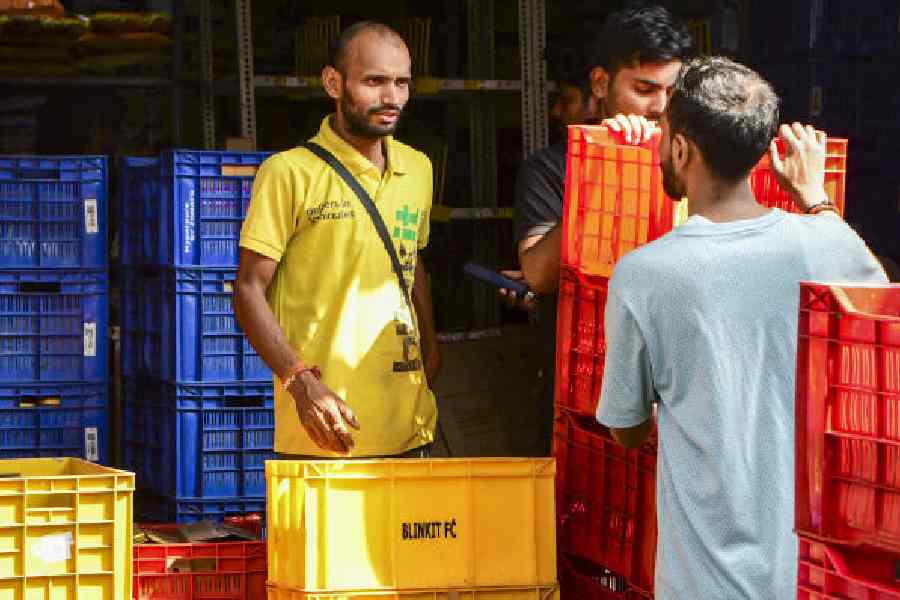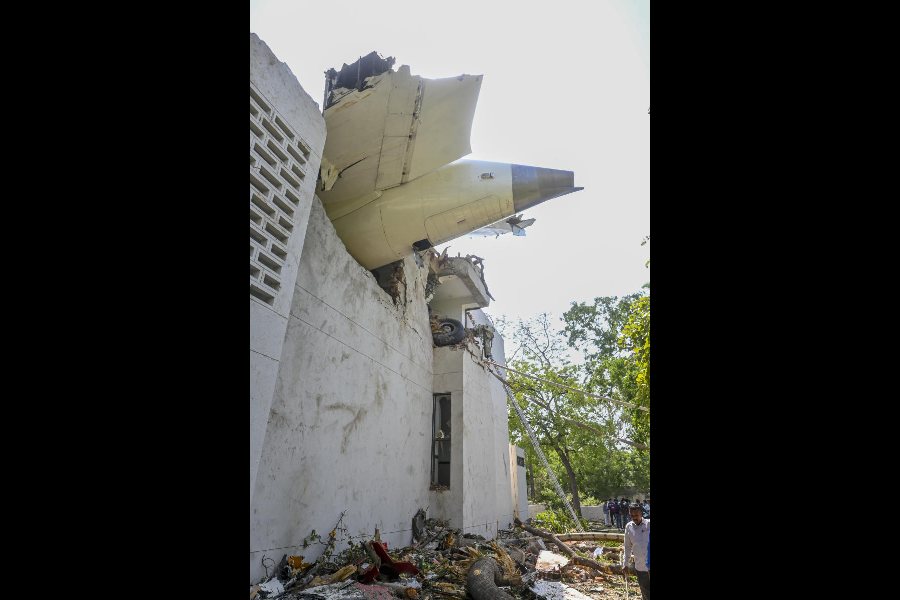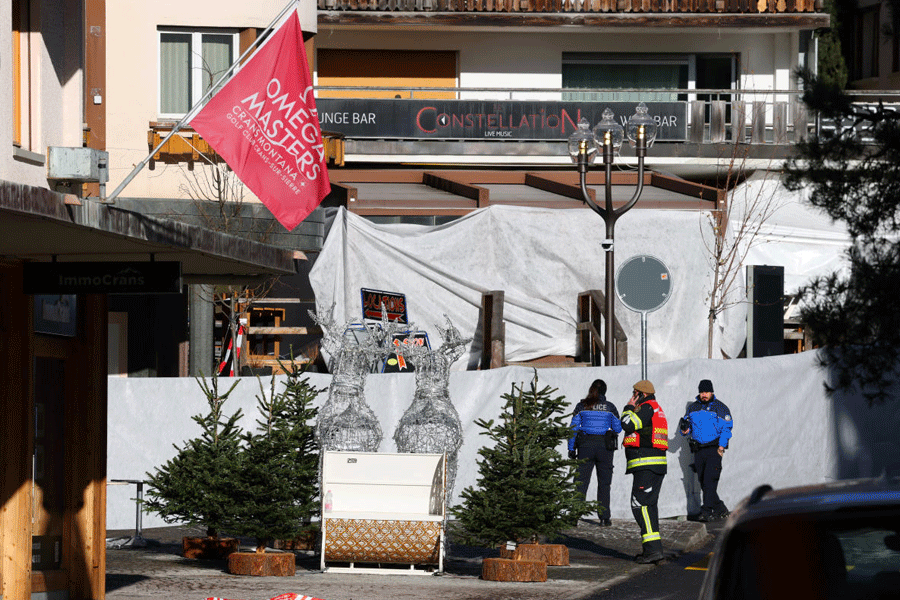 |
| Artist Anirban Mitra speaks on his works at Studio21. Picture by Rashbehari Das |
Multiple narratives, a multiplicity of themes and ideas, garish colours, cartoon and anime characters, Mr Muscle, FarmVille — artist Anirban Mitra’s paintings depict “multiple existences having multiple meanings which have been brought about by juxtaposition of readymade images”.
Different genres, histories and multiple narratives coexist within one single frame. Anirban culled images from life, comic strips, advertisements, news photographs, family photographs, technical drafting, famous paintings and movie stills and placed them on a canvas “almost arbitrarily”.
“I am trying to understand my generation, my time,” said Anirban, an alumnus of Kalabhavan, Santiniketan, at the end of a talk and presentation, Signs...emanate infinite possibilities, at Studio21 recently. The presentation was designed to show the thought process behind his paintings.
At times, the starting point for a painting is an event that left a lasting impression on him. “When we lived in Baranagar, there was always a water crisis. There was never enough water,” he said.
In 2009, Anirban came across an old black-and-white photograph of his grandmother and her sister holding water jugs in the late 1940s, and that picture served as the starting point for the painting Doraemon’s Gift To An Indian Woman, which packs in the politics and gender issues revolving around water. In the painting, Doraemon, who can solve almost every problem in life, asks, “Need a new gadget?”
Anirban also questioned the way “popular culture depicts women travelling long distances carrying water through a romantic landscape”. “Posters show it like a romantic scene. But the reality is different,” he said.
In the same painting Anirban also addressed the erotic undertones in Nandalal Bose’s Chandalika. “There’s also the issue of who will give water, who will take it,” he added.
Anirban took around four months to complete the 16ftx6ft painting. “I started with the portrait of my grandmother and sister not knowing what would happen next. I didn’t know how big the canvas would be. As I rolled out the canvas, I kept on adding figures. I didn’t have much space in my room. So when I finished, I took the whole canvas to my roof and spread it out. That’s when I saw it as a whole for the first time,” smiled Anirban.
The archiving process is personal, which makes the paintings to some extent autobiographical.
“When you are appropriating images from popular culture, there is a risk that the references may bear a resemblance with what other artists are doing. Anyone can collect any material from a number of sources. But I try to paint the things that are associated with my life. It can be a pump or a tap in my garden...” said Anirban, who is planning to start work on a painting that would revolve around ghosts.
“It would be about the history of ghosts and how ghosts have been shown in popular culture. There is the friendly and the harmful ghost.”
In 2008, while staying in Baroda for two months, Anirban came across a pest control advertisement. “Everyone gets scared when pests enter your home. Pest is the intruder here… and there’s the issue of how commercial products are made to kill it. Then I saw the Mr Muscle ad. Like a superhero, Mr Muscle, with his rippling muscles, protects the house,” said Anirban.
The painting Lakshman Rekha and Mr Muscle not only addressed gender issues (“the woman is always shown cleaning the house”), the definition of pest (“who is the pest here?”) but also looks at “how commercials manipulate our perception of looking at a home”.

